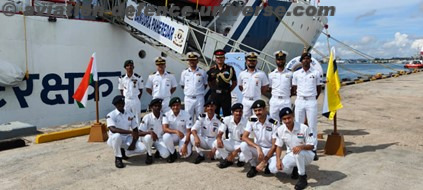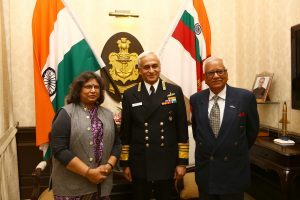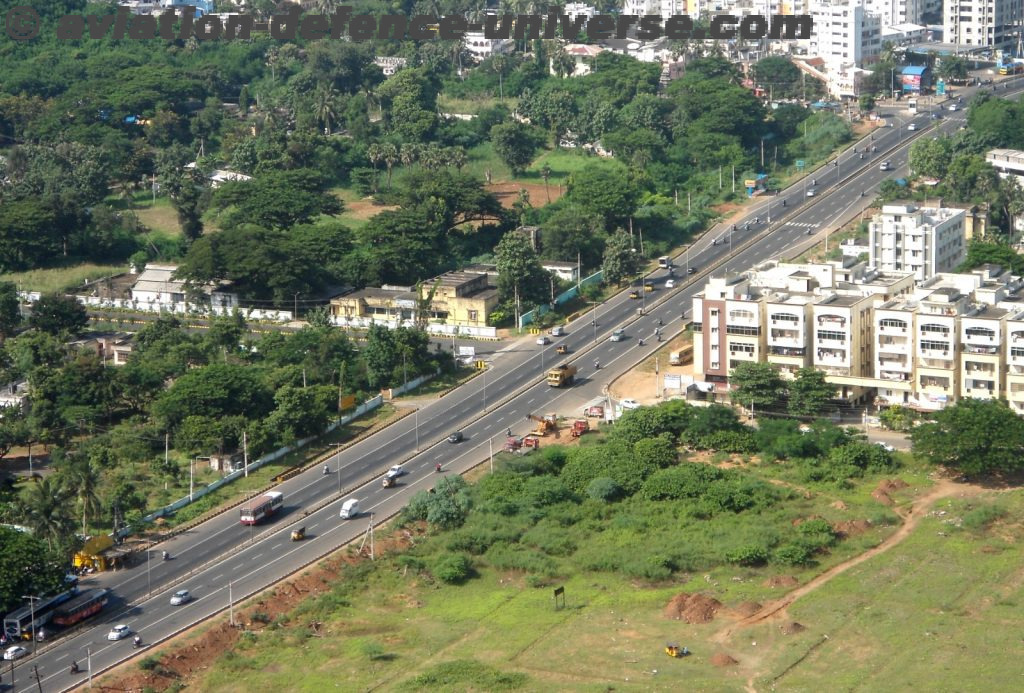By Team ADU
New Delhi. 02 December 2016. When the Indian Navy raised its first naval air station, INS Garuda, in Cochin on 11 May 1953, it went hand-in-hand with the commissioning of the No.550 Squadron, of Short Sealand aircraft and Fairey Firefly aircraft. Seven years hence 1960 saw the No.300 White Tigers Squadron, consisting of Sea Hawks aircraft being commissioned. And since then Navy’s air arm never looked back.
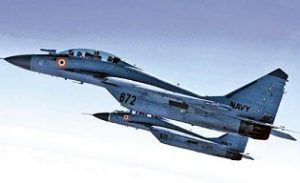 Today in 2016 it is a reckonable modern force and is testimony to Navy’s aspirations and resolve in keeping a strong vigil over its national and international waters and making itself an invaluable tool for power projection. The Indian Naval Air Arm is a branch of Indian Navy which is tasked to provide an aircraft carrier based strike capability, fleet air defence, maritime reconnaissance, and anti-submarine warfare.
Today in 2016 it is a reckonable modern force and is testimony to Navy’s aspirations and resolve in keeping a strong vigil over its national and international waters and making itself an invaluable tool for power projection. The Indian Naval Air Arm is a branch of Indian Navy which is tasked to provide an aircraft carrier based strike capability, fleet air defence, maritime reconnaissance, and anti-submarine warfare.
In 1961 INS Vikrant (formerly HMS Hercules) was acquired by the Indian Navy. The Vikrant’s initial airwing consisted of British Hawker Sea Hawk fighter-bombers and a French Alize anti-submarine aircraft. On 18 May 1961, the first jet landed on board, piloted by Lieutenant (later Admiral) R H Tahiliani. That year, the No.310 Cobras Squadron consisting of Alize aircraft was commissioned. In December 1961, the aircraft carrier participated in Operation Vijay, the liberation of Goa from Portugal. Its role was primarily to deter foreign naval intervention during the 40-hour-long military action.
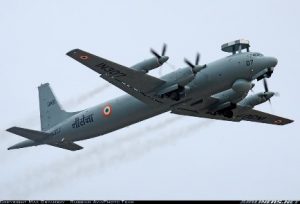 In 1976, the Indian Air Force handed over Super Constellation aircraft to the No.312 Albatross Squadron in Dabolim, Goa. Being fairly old aircraft at that point, these were withdrawn from active service by 1983. To replace them in the maritime patrol role, Soviet aircraft were acquired. The No. 315 Winged Stallions Squadron was commissioned in 1977 with the Ilyushin Il-38 aircraft.
In 1976, the Indian Air Force handed over Super Constellation aircraft to the No.312 Albatross Squadron in Dabolim, Goa. Being fairly old aircraft at that point, these were withdrawn from active service by 1983. To replace them in the maritime patrol role, Soviet aircraft were acquired. The No. 315 Winged Stallions Squadron was commissioned in 1977 with the Ilyushin Il-38 aircraft.
INS Vikrant played a major role in the successful Naval blockade of East Pakistan.Stationed off the Andaman & Nicobar Islands escorted by the Leopard class frigate INS Brahmaputra, as well as INS Beas, Vikrant redeployed towards Chittagong at the outbreak of hostilities. The morning of 4 December 1971, the eight Sea Hawk aircraft on the Vikrant launched an air raid on Cox’s Bazaar from 60 nm away. That evening, the air group struck Chittagong harbour. Other strikes targeted Khulna and Mongla.
The BAE Sea Harrier inducted in the 1980s operated from the INS Viraat, until it bid adieu to the force on March 6, 2016. The BAE Sea Harrier FRS Mk.51 / T Mk.60 flew with the INAS 300 and INAS 552 squadrons of the Indian Navy. The Sea Harriers are armed with the Matra Magic-II AAM and the Sea Eagle Anti-ship missiles. The aircraft were upgraded with the Elta EL/M-2032 radar and the Rafael Derby BVRAAM missiles.
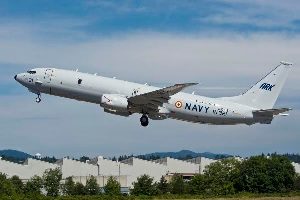 The Mikoyan MiG-29K program was the decision of the Indian Navy to acquire it for the aircraft carrier Admiral Gorshkov, now INS Vikramaditya. Indian Navy’s association with the MiG-29K began in Apr 2002 when a team led by Commander Gupta reached Moscow to evaluate the MiG-29K prototype for possible induction into the Indian Navy. The Team evaluated the aircraft on ground as well as in the air (the flight evaluation was conducted by a Navy Test Pilot Commander Ahuja). Some other aircraft were also evaluated but the MiG-29K was chosen. On 20 January 2004, the Indian Navy signed a contract for 12 single-seat MiG-29K and 4 two-seat MiG-29KUB. The first MIG-29K for the Indian Navy took flight on 22 January 2007. The MIG-29 KUB (two-seat trainer) is similar to the MIG-29K but with reduced operational range.
The Mikoyan MiG-29K program was the decision of the Indian Navy to acquire it for the aircraft carrier Admiral Gorshkov, now INS Vikramaditya. Indian Navy’s association with the MiG-29K began in Apr 2002 when a team led by Commander Gupta reached Moscow to evaluate the MiG-29K prototype for possible induction into the Indian Navy. The Team evaluated the aircraft on ground as well as in the air (the flight evaluation was conducted by a Navy Test Pilot Commander Ahuja). Some other aircraft were also evaluated but the MiG-29K was chosen. On 20 January 2004, the Indian Navy signed a contract for 12 single-seat MiG-29K and 4 two-seat MiG-29KUB. The first MIG-29K for the Indian Navy took flight on 22 January 2007. The MIG-29 KUB (two-seat trainer) is similar to the MIG-29K but with reduced operational range.
Naval Aviation has been an eclectic mix of fighters, transporters , choppers and UAVs. Hawk AJT, Boeing P-8I, SEAKING 42 (B/C), UH 3H, KAMOV-28, KAMOV-31, ALH, Chetak, Kiran HJT 16, TU 142 M, Dornier 228, IL 38, MIG 29-K (Fighter) and UAV Heron, UAV Searcher make a it a formidable force.
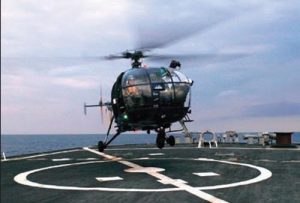 Indian Navy operates eight Tu-142 aircraft, which entered service in 1988. The aircraft have been upgraded, helping to extend the service life of the aircraft by sixteen years. One of the upgraded aircraft has been handed over to the Indian Navy. The aircraft operate from INS Rajali and INS Hansa. Two Tu-142 aircraft are being fitted with the air-launched version of the BrahMos. The aircraft will be the test platform for the BrahMos cruise missiles. The integration and tests of the missile is expected to be completed by 2010. Eight aircraft will be fitted with the BrahMos cruise missiles. The Tu-142 aircraft are in the process of being replaced by the Boeing P-8I Neptune long range maritime aircraft.
Indian Navy operates eight Tu-142 aircraft, which entered service in 1988. The aircraft have been upgraded, helping to extend the service life of the aircraft by sixteen years. One of the upgraded aircraft has been handed over to the Indian Navy. The aircraft operate from INS Rajali and INS Hansa. Two Tu-142 aircraft are being fitted with the air-launched version of the BrahMos. The aircraft will be the test platform for the BrahMos cruise missiles. The integration and tests of the missile is expected to be completed by 2010. Eight aircraft will be fitted with the BrahMos cruise missiles. The Tu-142 aircraft are in the process of being replaced by the Boeing P-8I Neptune long range maritime aircraft.
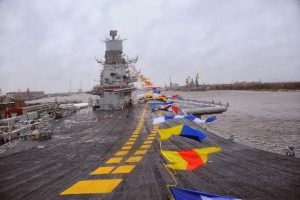 The New Delhi and Boeing signed a $2.1 billion contract to deliver 12 P-8I Neptune for anti-submarine operations. The new aircraft will replace a fleet of Russian-manufactured Tupolev-142M planes. P-8I varies from the P-8A, with the Magnetic anomaly detector (MAD) has been kept intact while an aft-mounted radar provides 360-degree aerial radar surveillance capability. Many of the communication and other devices on-board are developed by Bharat Electronics Limited. The first squadron was formed with eight aircraft. When the entry finishes Tu-142 will be decommissioned.
The New Delhi and Boeing signed a $2.1 billion contract to deliver 12 P-8I Neptune for anti-submarine operations. The new aircraft will replace a fleet of Russian-manufactured Tupolev-142M planes. P-8I varies from the P-8A, with the Magnetic anomaly detector (MAD) has been kept intact while an aft-mounted radar provides 360-degree aerial radar surveillance capability. Many of the communication and other devices on-board are developed by Bharat Electronics Limited. The first squadron was formed with eight aircraft. When the entry finishes Tu-142 will be decommissioned.
Kamov Ka-25, Kamov Ka-28, and the Kamov Ka-31: The Ka-25 was acquired by the Indian Navy in 1980 for anti-submarine warfare, but had severe technological limitations. The Ka-28s were acquired in the mid-80s, and were said to be a quantum leap over their predecessors from an ASW standpoint. The Ka-31 takes the Kamov capabilities even further by enabling real-time network-centric warfare for the Indian Navy.
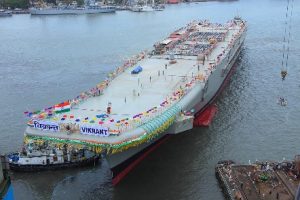 Westland Sea King and the Sikorsky SH-3 Sea King: Used principally for anti-submarine warfare (ASW) and search & rescue roles,the helicopter fleet operate from INS Garuda (Kochi) as well as INS Kunjali-II (Mumbai) air stations. US sanctions on India in response to India’s nuclear tests resulted in a large part of the Sea King fleet being grounded for want of spare parts. Seventeen of the Sea King helicopters will be upgraded. The upgrade will feature day and night capability, capability to work in adverse weather conditions, integration of two anti-ship missiles with a range of fifty kilometres and a new radar.
Westland Sea King and the Sikorsky SH-3 Sea King: Used principally for anti-submarine warfare (ASW) and search & rescue roles,the helicopter fleet operate from INS Garuda (Kochi) as well as INS Kunjali-II (Mumbai) air stations. US sanctions on India in response to India’s nuclear tests resulted in a large part of the Sea King fleet being grounded for want of spare parts. Seventeen of the Sea King helicopters will be upgraded. The upgrade will feature day and night capability, capability to work in adverse weather conditions, integration of two anti-ship missiles with a range of fifty kilometres and a new radar.
Aérospatiale SA 316 Alouette III also known as the Chetak, these choppers have seen active service in the Navy as well as the Coast Guard. They are carried on several combatant as well as non-combatant ships. They are also operated from and maintained at the INS Kunjali-II and INS Utkrosh Naval Air Stations in Mumbai and Port Blair respectively.
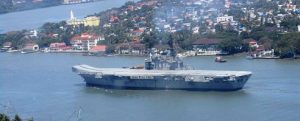 HAL Dhruv developed by Hindustan Aeronautics Limited, the Navy received its first Dhruvs on 28 March 2002. It is expected to receive a total of 120 units to replace the Chetak helicopters in service. The naval variant is fitted with the Super Vision-2000 maritime radar, capable of detecting targets with low radar cross section at a range of 200 km. The anti-submarine version of the helicopter is fitted with dunking sonar, torpedoes, depth charges. The helicopter may also be fitted with the missiles for anti-ship roles. However, in 2008, Indian Navy pronounced Dhruv unsuitable for its role as an ASW platform. Indian Navy will continue to procure Dhruv as a multi-role utility platform.
HAL Dhruv developed by Hindustan Aeronautics Limited, the Navy received its first Dhruvs on 28 March 2002. It is expected to receive a total of 120 units to replace the Chetak helicopters in service. The naval variant is fitted with the Super Vision-2000 maritime radar, capable of detecting targets with low radar cross section at a range of 200 km. The anti-submarine version of the helicopter is fitted with dunking sonar, torpedoes, depth charges. The helicopter may also be fitted with the missiles for anti-ship roles. However, in 2008, Indian Navy pronounced Dhruv unsuitable for its role as an ASW platform. Indian Navy will continue to procure Dhruv as a multi-role utility platform.
The Indian Navy operates at least two squadrons of Heron and Searcher Mk-II UAVs, based in Kochi (INAS 342) and Porbandar (INAS 343). There are plans to have at least two more squadrons of UAVs.UAVs are controlled from ships to increases the range of surveillance. There are plans to introduce rotary UAVs into the Indian Navy.These UAVs will have higher endurance and load carrying capability resulting in better reconnaissance capabilities.
Future additions are also planned for the arm. Indigenously made HAL Tejas NP-1 naval variant will add to Navy’s might. The Indian navy has placed an order for its first six Tejas at an approximate cost of ₹1.5 billion (US$22.3 million) per aircraft, the total order amounts to ₹9 billion (US$133.7 million). S-70B Seahawk helicopters have been selected for the tender with an additional 8 helicopters as options. They will replace the Westland Sea King.
Flag Officer Naval Aviation (FONA) controls training, maintenance and other functions of naval aviation. Aircraft yards at Kochi, Kerala and Dabolim, Goa are responsible for maintaining the fleet’s air arm. An exclusive base, INS Shikra for helicopters was commissioned in Mumbai.
To protect and preserve India’s growing trade with Southeast Asia and offer a defence against increasing Chinese naval presence in the Bay of Bengal, a new naval base is being built near Visakhapatnam. It is expected to be capable of harbouring two aircraft carriers, including the planned new Vikrant-class aircraft carrier. There are two more naval air stations, INS Rajali and INS Parundu in Tamil Nadu.
Current projects, ranging from acquisition of an aircraft carrier to fitment of the most modern and state-of-the-art equipment on board aerial platforms, are in consonance with the envisaged growth of the Navy and the challenges that it must face in the future. Indian Naval Aviation is set to propel itself into the major league of tomorrow’s navies.









